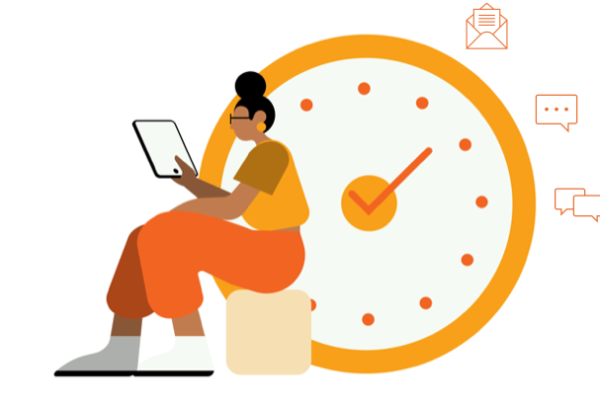
Most businesses will tell you that they’re focused on their customers. They may not know everything about their customers, but they market with intent, based on what they believe consumers want. Their customers, however, often tell a different story: of too many emails, irrelevant offers, and missed opportunities because the right offer was made at the wrong time or through the wrong channel.
The disconnect between marketers’ own view of personalization and consumers’ experiences happens largely because marketing teams are using disconnected tools. They have one tool for email marketing, another for social media, a third for SMS/text, and so on. Individually, each tool appears to be effective, but collectively the experience can feel disjointed and impersonal. To fix this, many marketers are opting for a simplified solution to manage their consumer outreach holistically across channels, often in the form of a customer engagement platform (CEP).
Learning to do more with less
The idea of doing more with less seems counterintuitive. But there’s a tipping point at which the advantage of adding more marketing tools is outweighed by the complexity of managing it all. Take data aggregation as an example. Marketers need customer data to build effective campaigns, but collecting data from different tools and trying to consolidate it all often proves too challenging for marketing teams. Just the data cleanup alone can take days or weeks, depending on the availability of IT resources.
Marketing teams are learning that, before they can hyper-personalize, they need to hyper-simplify. The smart way to simplify is through a unified platform that controls multichannel marketing campaigns and streamlines data collection in a holistic fashion. And that’s exactly what a CEP is designed to do. In fact, the best CEPs embody the “more is less” aesthetic both in features and price by replacing multiple software solutions with a single, subscription-based model.
Why should you consider a customer engagement platform?
In the coming years, more and more marketing organizations are expected to embrace CEPs. The shift toward CEPs reflects changes in consumer marketing over the last several years. Omnichannel marketing, once seen as a competitive advantage, has become table stakes for customers who now split their screen time between multiple devices. Third-party customer data is largely disappearing. And consumers increasingly expect their digital experiences to include a personal touch.
If you’re considering a CEP to enhance or even replace your marketing toolset, here are five reasons why you shouldn’t wait to make that decision.
Reason #1: Digital experiences are the new normal.
Yes, COVID accelerated the shift to digital consumerism, but we were already on that path. If you’re waiting for things to return to “normal” (i.e., customers who actually read their emails will wait patiently on the phone for three minutes for the next available customer agent), forget about it—those days are gone. Consumers have developed a taste for self-service, just-in-time offers, creative multichannel marketing, and hyper-personalized digital experiences. Fail to deliver those things and your customers will look elsewhere.
Reason #2: You can’t buy customer data anymore; you need to earn it.
For a long time, marketers could lean upon third-party data providers to fill in the missing gaps in their customer data: what they bought, what they were interested in, etc. Stricter privacy laws have relegated that once-vibrant market to just a handful of players (e.g., Facebook, Google, Amazon, Apple). As a result, marketers must now learn how to obtain and analyze their own first-party customer data.
Reason #3: Customers don’t see themselves through an omnichannel lens.
Marketing teams have learned to look at marketing campaigns through a channel-specific lens: email campaigns, social media campaigns, online ad campaigns, and so on. But customers don’t view their experiences that way. They move seamlessly from channel to channel throughout their day and stitch those experiences together. So, while sending a customer the same offer in an email and a text might seem like you’re on top of things, it can actually come across as disorganized (or impersonal) to your customers.
Reason #4: “Knowing my name doesn’t show me you know me.”
Putting someone’s name in an email isn’t personalization. In fact, they may not even read their emails! Personalization today means knowing which offers resonate most with customers, when and on which channel. Are they coupon clippers? Do they respond better to time-based offers? Are they seasonal shoppers or loyal customers? Making a personal connection with customers today means digging deeper into the relationship to create the right message at the right time on the right medium.
Reason #5: You’re competing with a lot more companies for the same customers.
COVID didn’t just speed up the digital revolution — it created a tidal wave of market disruption. Whether it’s restaurants or sporting venues, television or telemedicine, customers now have more choices than ever before. As a result, marketing teams need to be more creative in how they acquire and engage customers if they want to outmaneuver the growing field of competitors. Fortunately, CEPs can become your engine of creativity by fostering deeper conversations with your customers, uncovering new insights into their buying behaviors, and providing the kind of personalized service that keeps customers coming back.
Ultimately, CEPs help create unique customer experiences in a simpler, quicker, more organized manner. CEPs help us understand that buying behavior isn’t just a question of what, but also when and why.
Now that you understand why a CEP is important, the next important question is when. There’s no time like now, and with everything else going on, none of us can afford to wait on the sidelines. It’s easier to get started than you think. Talk to us.




